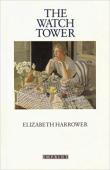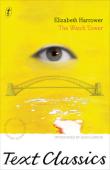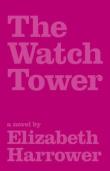AustLit
Latest Issues
AbstractHistoryArchive Description
'Breaking their poses like trees snapping branches, the women urgently regarded each other, cleared away all signs of work in an instant, examined their souls for defects, in a sense crossed themselves, and waited.
'After Laura and Clare are abandoned by their mother, Felix is there to help, even to marry Laura if she will have him. Little by little the two sisters grow complicit with his obsessions, his cruelty, his need to control.
'Set in the leafy northern suburbs of Sydney during the 1940s, The Watch Tower is a novel of relentless and acute psychological power.' (Publication summary)
Notes
-
Also published in braille and sound recording format(s).
Contents
- Introduction, single work criticism
Publication Details of Only Known VersionEarliest 2 Known Versions of
Other Formats
- Sound recording.
Works about this Work
-
'The Chinese Translation and Reception of Elizabeth Harrower's' The Watch Tower
2018
single work
essay
— Appears in: Southerly , December vol. 78 no. 3 2018; (p. 206-221)'The larger history of Australia's relationship with China over the past century includes a substantial story of cultural relations and understandings between the two countries. And central to this story is another, of scholarly exchange around literature, conducted through the medium of translation, with all the extentuation, complication and delay that attends the freighting of words, phrases and expressions across the bounds of different languages. This essay considers the development of Australian literary studies in China, as it grew from a condition of estrangement to one of comprehensive interconnectivity in this period, through the story of the translation of one book: Elizabeth Harrower's 'The Watch Tower' (1966). (Publication abstract)
-
On Pacification : The International and Domestic Referents of an Australian Artwork
2018
single work
essay
— Appears in: Transnational Literature , December vol. 11 no. 1 2018;'This is a piece of creative non-fiction merging art commentary, literary analysis, and a personal account of the writer’s research. Changes across time in the writer’s understanding of an Australian painting – Breakfast Piece (1936) by Herbert Badham – are examined, with the writer’s slowness to comprehend the painting’s overt allusion to the Italian invasion of Ethiopia (Abyssinia) highlighted. The writer’s discovery that Breakfast Piece was reproduced on the covers of a 1985 edition of Eleanor Dark’s 1945 novel The Little Company and a 1991 edition of Elizabeth Harrower’s 1966 novel The Watch Tower provokes an analysis of these authors’ treatment of international geopolitical affairs and local gender relations.' (Publication abstract)
-
What I’m Reading
2017
single work
column
— Appears in: Meanjin Online 2017; -
Traversing 'The Same Extreme Country' in The Watch Tower and Daniel Deronda
2017
single work
criticism
— Appears in: Elizabeth Harrower : Critical Essays 2017; (p. 123-136)Over the course of 1961, the New Yorker published Hannah Arendt’s reports on the trial of Nazi war criminal Adolf Eichmann. Her articles would give rise to a controversy in which Arendt would lose friends, as well as the support of many in the Jewish community. They also gave rise to one of the most significant philosophical concepts to emerge in the aftermath of the Holocaust: the idea of the banality of evil. Arendt painted a picture of Eichmann as a bureaucrat and a follower, who committed atrocities not out of ideology or hatred, but rather through a pronounced inability to think for himself. She writes,
[I]t would have been very comforting indeed to believe that Eichmann was a monster, even though if he had been Israel’s case against him would have collapsed or, at the very least, lost all interest. Surely, one can hardly call upon the whole world and gather correspondents from the four corners of the earth in order to display Bluebeard in the dock. The trouble with Eichmann was precisely that so many were like him, and that the many were neither perverted nor sadistic, that they were and still are, terribly and terrifyingly normal.' (Introduction)
-
'White, Fierce, Shocked, Tearless' : The Watch Tower and the Electric Interior
2017
single work
criticism
— Appears in: Elizabeth Harrower : Critical Essays 2017; (p. 86-100) In Elizabeth Harrower’s The Watch Tower (1966), Clare Vaizey visits a doctor in Sydney’s Macquarie Street to see about an allergic rash on her neck. She assures the doctor that the rash appears nowhere else on her body and yet – ominously – he requires her to take off all her clothes. She obeys. The doctor’s motives are opaque, his expression impassive, his manner clinical. His tenth-floor surgery sits high in a cliff-like row of buildings, its windows staring down on the harbour and the “barbered greenness” of the Botanical Gardens.2 The doctor’s office resembles, it seems, a “watch tower”. It is uncertain whether the surgery is a malignant space of punishing surveillance or benign, illuminating perspective. The view the surgery commands recalls the watch tower that is Clare’s own suburban bedroom in the Neutral Bay house where she lives with her sister Laura, and with Laura’s husband, Felix Shaw, the novel’s Bluebeard. With its view of the world outside, of glittering blue harbour and suburban streets, Clare’s bedroom is, on the one hand, a space of retreat from the more threatening communal areas of the Shaw house. On the other hand, the bedroom is uneasy, occupied territory; it is cheerless, blank and exposed, clinical and impersonal like a doctor’s surgery. In both locations Clare must submit to the intrusive gaze of a dominant male figure. Naked but for her high heels, Clare gazes upon the dazzling landscape of garden and harbour while the doctor circles her body. She practises detachment, shielding her private self as her pearly white flesh is exposed. She maintains composure under inspection. But at the moment of parting, an intense, wordless exchange takes place, the import of which is not directly stated: the doctor looks at Clare deeply and she returns his gaze. In that moment, “an invisible rocket sped between them, rocked the room, shocking and enlightening her to the very tips of her high-heeled shoes” (Introduction)
-
The Watch Tower
2012
single work
review
— Appears in: The Monthly , June no. 79 2012; (p. 63)
— Review of The Watch Tower 1966 single work novel -
Vanity Fare
2012
single work
review
— Appears in: The Sydney Morning Herald , 30 June-1 July 2012; (p. 32-33)
— Review of The Watch Tower 1966 single work novel -
'Too Many Vampires'
2012
single work
review
— Appears in: Australian Book Review , October no. 345 2012; (p. 12, 14)
— Review of The Watch Tower 1966 single work novel -
[Review] The Watch Tower
2012
single work
review
— Appears in: The Lifted Brow , no. 14 2012; (p. 27)
— Review of The Watch Tower 1966 single work novel -
New Paperbacks
1991
single work
review
— Appears in: The Sydney Morning Herald , 13 July 1991; (p. 42)
— Review of May Week Was in June : Unreliable Memoirs Continued 1990 single work autobiography ; No Place for a Woman 1991 single work autobiography ; The Watch Tower 1966 single work novel -
The Solid Mandala and Patrick White’s Late Modernity
2011
single work
criticism
— Appears in: Transnational Literature , November vol. 4 no. 1 2011; 'This essay contends that the Australian novelist Patrick White (1912-1990) presents, in his novel The Solid Mandala (1966), a prototypical evocation of late modernity that indicates precisely why and how it was different from the neoliberal and postmodern era that succeeded it. Late modernity is currently emerging as a historical period, though still a nascent and contested one. Robert Hassan speaks of the 1950-1970 era as a period which, in its 'Fordist' mode of production maintained a certain conformity yet held off the commoditisation of later neoliberalism's 'network-driven capitalism'. This anchors the sense of 'late modernity,' that will operate in this essay, though my sense of the period also follows on definitions of the term established, in very different contexts, by Edward Lucie-Smith and Tyrus Miller.' (Author's introduction)
-
Australian Literature : Elizabeth Harrower
2012
single work
column
— Appears in: The Sun-Herald , 6 May 2012; (p. 18-19) 'Gay Alcorn talks to Elizabeth Harrower, who was one of the country's most celebrated author's until she stopped writing 40 years ago.' -
Written in the Past Tense
2012
single work
column
— Appears in: The Sunday Age , 6 May 2012; (p. 15) Gay Alcorn reports on the first interview with Elizabeth Harrower in more than two decades. -
Museum Mentality
Who Killed Australian Literature?
2012
single work
criticism
— Appears in: The Weekend Australian , 20-21 October 2012; (p. 8-9) -
Turning Inward on Himself : Male Hysteria in Elizabeth Harrower's The Watch Tower
2012
single work
criticism
— Appears in: Southerly , vol. 72 no. 1 2012; (p. 204-213) 'The much-maligned character of Felix Shaw in Elizabeth Harrower's The Watch Tower (1966) has consistently been described as the "embodiment of total inexplicable evil", "of motiveless malignity"; he is a caricature of a violent, sadistic and misogynistic husband who tortures his wife Laura, and her younger sister Clare, into submission (Clancy 463). Harrower charts Laura and Clare's gradual disintegration within the prison of their suburban house overlooking Sydney harbour, a gradual unraveling towards "craven, total submission", which ultimately results in Clare being granted a form of freedom at her sister's expense (Harrower 89). Much of the criticism on Harrower stems from the 1980s and 1990s, when her work was taken up by feminists eager to hold up The Watch Tower as a lesson on the oppression of women in the post-war period. From this perspective Harrower's construction of Felix serves as a warning, a modern fairy tale that exposes the sadistic impulses of patriarchy, and the prison of the suburban domestic space. A telling case in point is the essay "What Does Women Mean? Reading, Writing and Reproduction" (1983), in which leading critic Sneja Gunew argues that The Watch Tower is structured as an "elaborate cautionary tale", a reworking of the classic "gothic [narrative] in which women are traditionally caged up and their lives threatened" (119). The text is "a salutary lesson", with Clare's ability to escape Felix's grasp high lighting the importance of maintaining the integrity of female selfhood, despite the way the text deliberately denies the reader any form of cohesive resolution or satisfactory solution at the end of the novel (119). So, too, in an interview with Harrower when The Watch Tower was republished as a TextClassic in 2012, the Sydney Morning Herald described the novel as a "thriller", and Felix as "unhappy, meanspirited" and "one of the most superbly drawn evil characters in Australian literature" (Alcorn). The epithet "evil", whilst no doubt applicable to Felix, perpetuates the understanding of the figure as a caricature, a fairytale villain.' (Author's abstract)






